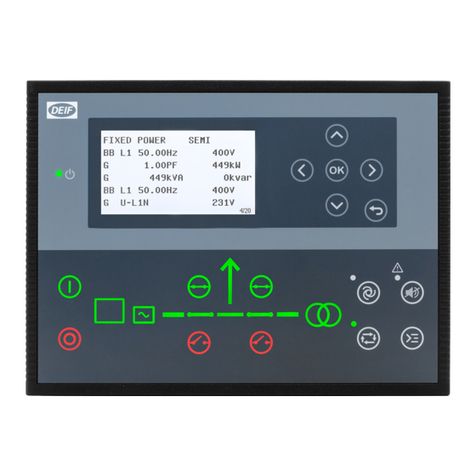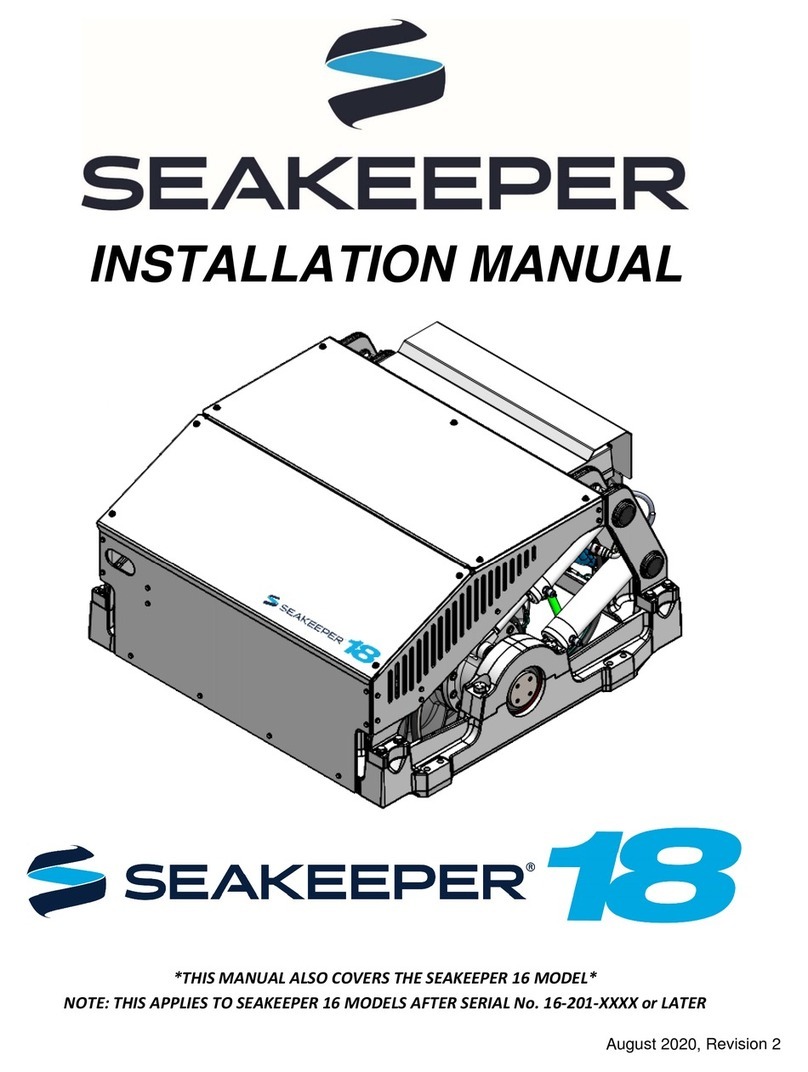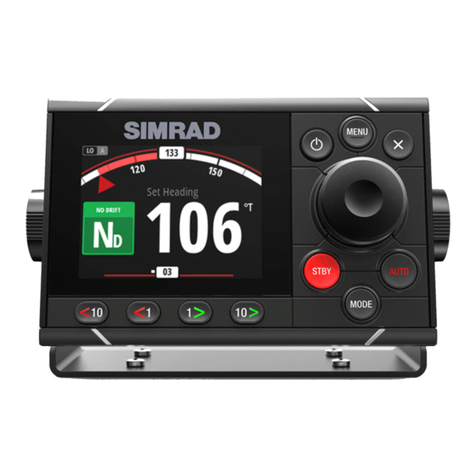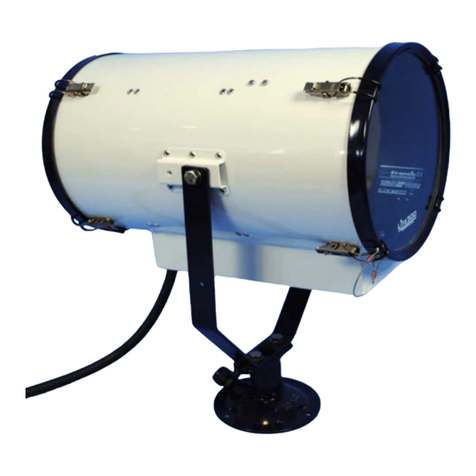Ros PT-10 Operating instructions

WARRANTY
Remote Ocean Systems, Inc. (hereinafter called "ROS") warrants its products as stated below
subject to the conditions specified.
ROS warrants its products, when operated under normal conditions, to be free from defects in
material or workmanship for a period ofone year fromthedate ofpurchase providedthat inspection
by ROS discloses that such defects developed under normal and proper use. ROS products
repaired or replaced pursuant to this warranty shall be warranted for the unexpired portion of the
warranty applying to the original product. The liability of ROS under thiswarranty shallexist subject
to the following conditions:
(a) ROS is properly notified of such defects by Purchaser, and the defective product is
returned to ROS, transportation charges paid by Purchaser.
(b) ROS shall be released from all obligations under its warranty in the event repairs or
modifications are made by persons not authorized by ROS.
(c) Representations and warranties made by any person, including distributors and
representatives of ROS, which are inconsistent or in conflict with the terms of this
warranty, shall not be binding upon ROS unless reduced to writingand approved by
an officer of ROS.ROS shall inno eventbe liablefor other direct,special, incidental,
consequential, indirect or penal charges.
(d) This warranty shall be governed by the laws of the State of California.
In the event the defect is determined to be within the terms of this warranty, then ROS agrees to
repair and/or replace (at ROS's discretion) the product or defective portion at no charge to the
Purchaser. This warranty does not apply to expendable items nor to normal wear and tear and is
conditional upon performance of normal preventative maintenance procedures.
Our commitment to quality and customer service directs us to constantly strive to improve our
products. The materials and specifications presented in our manuals and data sheets are correct
and accurate to the best of our knowledge, and are presented in good faith. However, the
information is not guaranteed and is subject to change without notice.
LIMITATION OF REMEDIES
Purchaser assumes all risk and liability for results obtained in any installation, operation, or use of
the product. Purchaser’s sole remedy for any breach of warranty by vendor shall be limited to the
“express remedies” set forth above. Otherwise, in no event shall vendor, its agents, or employees
be liable to the original purchaser or any third party for any consequential or incidental damages or
expenses of any nature arising directly out of or in connection with the use of vendor products.
Even if vendor has been advised of the possibility of such damages or expenses. In any event,
unless otherwise contrary to state law, vendor liability under this limited warranty shall not exceed
the purchase price of the product.
21-00019 REV B
II

21-00019 REV B
III
CUSTOMER ASSISTANCE
ROS, Inc. uses a worldwide network of stocking distributors and representatives who are
familiar with our products and are able to provide assistance during installation and/or
operation of these products.
Ifyou have any questions orproblems with this productthatarenotcoveredbythismanual
or instruction, please contact our agent in your area, or contact us directly by phone, fax or
e-mail.
TEL: (001) 858-565-8500
FAX: (001) 858-565-8808

CHANGE RECORD
General Update to New Format 15APR97
Updated to a Standard PT-10 Manual 26MAR01
Added Quad Seal & Sealscrew Replacement to the
“Seal Replacement” Section 28JUN05
Add configuration -02 (MHDL-12-FCR CONN) 02SEPT08
21-00019 REV B
IV

21-00019 REV B
V
TABLE OF CONTENTS
SECTION PAGE
WARRANTY I
CUSTOMER ASSISTANCE II
CHANGE RECORD III
INTRODUCTION 1
GENERAL DESCRIPTION 2
SPECIFICATIONS 3
STANDARD CONNECTOR WIRING 4
INSTALLATION AND OPERATION 5
Operational Check 5
Installation 5
Equipment Mounting 6
Interconnection 6
MAINTENANCE 7
Fluid Volume Check 7
Work Area Preparation 7
End Cap Removal 8
Seal Replacement 8
Motor Removal and Replacement 9
End Cap Replacement 10
APPENDIX 12

INTRODUCTION
This publication describes the ROS model PT-10 Pan and Tilt which is available in two
standard models; an air-filled version for nuclear and other shallow water applications, and
an oil-filled pressure compensated unit for deep-water applications. For any problems or
questions not covered in this manual, please contact the factory or one of our authorized
representatives.
ROS, Inc. reserves the right to change or modify designs or specifications as part of its
continuing product improvement program.
21-00019 REV B
1

GENERAL DESCRIPTION
The model PT-10 Pan and Tilt is designed to remotely orient underwater or in-air TV and
photographic cameras, lights, acoustic equipment, and other instrumentation.
The housing, end plates, and all machined internal components of the PT-10 are made of
stainless steel, titanium or 6061-T6 aluminum which, is hard anodized for corrosion
protection. Other external hardware such as screws and retaining rings are made of
stainless steel.
The drive train for each axis of the pan and tilt uses a reversible synchronous motor
coupled to low backlash harmonic gearing. The output gear of the harmonic reducer is
bolted directly to the output shaft. Mounting plates for the motor and gear assemblies are
held in position with internal retaining rings and anti-rotation keys. The output shafts are
each supported by bronze bearings in the end caps. The basic design of the drive train is
very compact, and it offers high reliability and minimum backlash.
If the PT-10 is oil-filled, then it is pressure compensated by use of a diaphragm. This
provides a slight positive internal pressure to minimize shaft seal drag and potential
leakageproblems due to hydrostatic pressure. The oil also providescontinuouslubrication
and cooling to the internal components.
The PT-10 is designed such thateither output shaft can be stalled without causing damage
to either the gears or the motor. This allows the use of simple external stops to limit the
angular range of motion if necessary.
Electrical connectionismadethroughaminiaturewet-mateable underwater connector.This
connector hasaright-angle configurationtominimizetheswept-out volume requirementsof
the pan and tilt.
21-00019 REV B
2

PT-10 SPECIFICATIONS
POWER: 120 VAC, 0.135 amp
OPERATING DEPTH:
AIR-FILLED 100 ft. (30.48 m)
OIL-FILLED 9842.5 ft. (3000 m)
LENGTH: 7.6 inches (193 mm)
WIDTH: 5.8 inches (147mm)
DEPTH (w/connector): 4.0 inches (101mm)
WEIGHT IN AIR:
AIR-FILLED:
AL 6.5lbs.(2.9kg)
SS 10.8lbs.(4.9kg)
OIL-FILLED:
AL 7.0lbs.(3.2kg)
SS 11.3lbs.(5.1kg)
WEIGHT IN WATER:
AIR-FILLED:
AL 4.2lbs.(1.9kg)
SS 8.5lbs.(3.9kg)
OIL-FILLED:
AL 4.7lbs.(2.2kg)
SS 9.0lbs.(4.1kg)
ROTATION SPEED:
60Hz: 4.9 degrees/sec (0.82RPM)
50Hz: 4.1 degrees/sec (0.68RPM)
TORQUE: 10 pounds foot (14 Nm) minimum
SCAN RANGE (both axes): 360 degrees
GEAR BACKLASH: 36 arc minutes
OUTPUT SHAFT SIZE: 1.00 inches (25.4 mm) diameter
HOUSING MATERIAL: 6061-T6 AL
304/316 SS
HOUSING FINISH: Hard Black Anodize
Electropolish
HOUSING MOUNTING: Two OR four ¼-20 holes in pan shaft
EQUIPMENT MOUNTING: Two ¼-20 holes in tilt shaft
CONNECTOR: LPMBH-5-MP / MHDL-12-FCR
MATING CONNECTOR: LPMIL-5-FS / MHDL-CCP
COMPENSATOR O/F: Bellofram
COMPENSATING FLUID O/F: Spindle Oil
OPTIONAL CONNECTORS: FAWL-5S-MP
FAWL-5P-FS
21-00019 REV B
3

STANDARD-CONNECTOR-WIRING
Connector Type: Five contact LPMBH-5-MP underwater mateable.
PIN NUMBER CONNECTOR FUNCTION SHAFT ROTATION
1 120 VAC COMMON
2 120 VAC TILT UP TILT CCW
3 120 VAC TILT DOWN TILT CW
4 120 VAC PAN RIGHT PAN CW
5 120 VAC PAN LEFT PAN CCW
NOTE: Function directions are for a PT-10 mounted with the pan axis down. If inverted,
the directions will be reversed.
1 2 3
21-00019 REV B
4
4 5
Bulk head Connector
Configuration -01: LPMBH-5-MP (Face View)
1 2
3 4 5
6 7 8 9
10 11 12
Face mount Connector
Configuration -02: MHDL-12-FCR (Face view)

INSTALLATION AND OPERATION
Whenyou receive the model PT-10 Pan and Tilt unit, unpackitcarefullyandinspectforany
shipping damage or if oil-filled, oil leakage. Please contact the factory immediately if any
such damage is noted.
OPERATIONAL CHECK
After unpacking the PT-10, an operational check shouldbe made prior to installationof the
unit. The following procedure is recommended:
1. Place the pan and tilt unit face down on a table with the connector up.
2. Make sure controller power is turned off.
3. Apply a small amount of silicone spray lubricant to the mating connector and
carefully attach it to the bulkhead connector.
4. Attach the other end of the cable assembly to the pan and tilt controller or
other control circuitry and operate both axes of the unit in both directions
while observing the output shafts.
5. If any problems are noted, please contact the factory immediately.
INSTALLATION
The PT-10 can be operated in any attitude. The pan axis should be vertical, however, to
maintain true azimuth and elevation motionswithout cross coupling. The unit is installedby
mounting the pan axis to a permanent structure. Two 1/4-20 tapped holes are provided in
the end of the output shaft for this purpose. If more convenient for your application,
mounting plates are available from ROS. This plate attaches to the output shaft and has
clearance mounting holes for bolting the plate to the fixed surface. The standard plate is
four inches in diameter and has four mounting holes for 1/4 inch diameter bolts located on
a 3.50 inch diameter bolt circle.
When the pan axis is rotated, all portions of the unit and the attached equipment rotate
about the pan output shaft. The installation should provide adequate clearance for the pan
and tilt and equipment.
NOTE: That if the pan and tilt is suspended from the pan axis rather than mounting with the
pan shaft down, the pan and tilt directions indicated in the connector diagram will be
reversed.
21-00019 REV B
5

21-00019 REV B
6
EQUIPMENT MOUNTING
Equipment to be oriented is mounted to the tilt axis of the pan and tilt. Two 1/4-20 tapped
holes in the output shaft are provided for this purpose. A standard mounting plate as
described above is available from ROS, Inc., and special mounting clamps and saddle
brackets can be provided if necessary.
ThePT-10wasdesignedtohandlereasonablepayloadstocommensuratewiththe10foot-
pound torque rating. Equipment size, weight, distance from the centers of both axes,
undersea current drag, and forces due to equipment cablesareallfactors,whichshouldbe
considered when mounting the equipment. Some general guidelines are as follows:
1. Mount the equipment as close as possible to the housing. This minimizes
bearing drag forces on the pan axis.
2. Mount the equipment so that the center of gravity is close to the center of the
tiltaxis to minimize torque requirements.Insomecasesitisadvantageousto
add counterweights to achieve a more balanced configuration.
3. When possible, minimizecrosssectionalareaoftheequipment,whichwillbe
exposed to hydrodynamic drag forces.
4. Route equipment and pan and tilt cables so they move freely throughout the
desired range of motions for the pan and tilt unit.
INTERCONNECTION
Interconnectionis made through the underwaterconnector. To mate the connector,TURN
POWER OFF, lubricate the connector lightly with silicone spray, push together, and move
the retaining strap on the mating connector into position.
The opposite end of the cable attaches to a controller such as the ROS model PTC-2,or
equivalentcontrollerwhichprovidestherequiredpowertotheconnectorpins. Cablelength
and conductor size should be chosen such that a voltage of at least 100 VAC will be
maintainedat the pan and tiltwhile in operation. With 18gauge conductors, a cable length
of 5,000 feet can be used. If you have any questions regarding cable length of
configuration, please contact the factory.

MAINTENANCE
The PT-10 Pan and Tilt was designed to provide a long lifetime of service with minimal
maintenance.
If equipped with oil, the recommended routine maintenance is limited to checking the
compensating fluid volume. If it is required, we recommend that the PT-10 be returned to
the factory for such service. If this is not possible, field maintenance and repair should be
limited to the procedures described in this manual. For unusual situations or if additional
field maintenance is required, please contact the factory for assistance. The maintenance
procedures covered in this manual are End Cap Removal, and Replacement, Seal
Replacement, and Motor Removal and Replacement andifequippedwithoil,FluidVolume
Checking.
FLUID VOLUME CHECK (If equipped with oil)
The compensator fluid volume should be checked periodically to assure that no fluid is
leaking out of the unit due to worn seals, etc. This is done by a simple visual inspection of
the compensator end of the tilt housing. The compensator diaphragm is enclosed by a
protective cover with holes in the end for water flow. The unit is assembled with
approximately 10 fl oz of spindle oil. When the fluid level is normal, the diaphragm will be
expanded outward. Its position can be checked by visual observation through the holes or
by using a blunt object inserted through the opening in the end of the cover. If fluid has
leaked out, the diaphragm will become flator recessed into the PT-10 housing, andtheunit
should be recharged with fluid.
WORK AREA PREPARATION
Any work done on the internal parts of the PT-10 requires the unit to be opened. A clean
work area should be prepared to avoid getting dirt or other particles on the seals or sealing
surfaces, or inside the motor or precision harmonic gearing.
If the PT-10 is oil-filled, there is a high probability of spillage when the unit is opened.
Additional fluid should be available for refilling, andtowels should be available for cleaning.
CAUTION: The PT-10 operates on 120 VAC. Extreme care should be taken to
assure that power is turned off and the cable is disconnected before any
maintenance is done.
END CAP REMOVAL
One or both end caps must be removed for any internal maintenance procedures. Both
end caps are identical and removal procedures are the same.
CAUTION: If the unit is oil-filled, it is internally pressurized by the compensator.
21-00019 REV B
7

1. Remove the two seal screws in the end cap. If the unit is oil-filled, allow the
oil to drain out before continuing.
2. Remove the stainless steel ring, which retains the end cap.
3. Remove seal screws. Using a special end cap pulling tool, thread the two
10-32 bolts into the seal screw holes.
4. Restrain the housing and pull the end cap out of the housing. NOTE: The
end cap, bearing assembly, output shaft, and output harmonic gear form an
assembly, and no attempt should be made at further disassembly of these
components without contacting the factory.
For replacement of the endcap, refer to the END CAP REPLACEMENT section of this
manual.
SEAL REPLACEMENT
Wheneverthe end caps are removed,the O-Rings, quad seals,and Seelscrews shouldbe
carefullyinspected for damage, and toassure cleanliness. If there is any sealdamage,orif
the unit is oil-filled and there is leakage, the O-rings and seals should be replaced.
1. Remove the end cap as described in the END CAP REMOVAL section.
2. Remove the old O-ring and quad seal.
3. Clean O-ring and quad seal surfaces.
4. Apply a small amount of silicone grease or other O-ring lubricant to the new
seals and install them in the grooves of the end cap. Avoid excessive
stretching of the O-ring. Refer to the END CAP REPLACEMENT section of
this manual for additional procedures.
If the unit is oil-filled and if the fluid is leaking near the compensator cover, the diaphragm
should be inspected and replaced if damaged. Remove the retaining ring, which attaches
to the compensator cover. Remove the cover. Remove the diaphragm by pulling out the
compensator plug.
Carefully inspect the diaphragm for any tears or nicks, particularly in the vicinity of the
sealingedge. Replaceifdamaged. Cleanthesealingsurfaces,applyasmallamountofO-
ring lubricant to these surfaces and the sealing surfaces of the diaphragm. Replace the
diaphragm, compensator plug, and the cover. Refill the unit with fluid.
NOTE: If water leakage has occurred and you suspect it may be caused by a worn output
shaft seal, please contact ROS, Inc. for assistance. Replacement of these seals requires
21-00019 REV B
8

special equipment and procedures.
MOTOR REMOVAL AND REPLACEMENT
The motors used in the PT-10 are brushless 120 VAC synchronous motors, and are noted
for very long lifetimes without maintenance. Before undertaking motor replacement, make
sure that proper operating voltage is being provided by the controller and interconnecting
cable.
1. Remove the end cap as described in ENDCAP REMOVAL section and ifoil-
filled, drain the remaining compensating fluid.
2. Remove the Adapterplatewiththe output connector still attached. De-solder
the wires, labeling them for later re-assembly if needed.
3. Grasp the output shaft and remove the shaft together with the attached
bearing plate.
4. The motor plate, which attaches tothe motor and the fixed harmonic gear are
now visible. Remove the retaining ring in the housing bore and the retaining
ring, which secures the motor plate assembly. Be careful not to scratch the
inside of the housing with the ends of the rings, particularly in the vicinity of
the O-ring sealing surfaces. Keep these rings separate from the outer rings,
which retain the end caps. The outer rings are made of stainless steel for
corrosion protection. If one of the retaining rings is “wavy”, note that it
belongs closest to the motor.
The motor assembly can be removed in most casesby inverting the housing andtapping it
lightly with a non-metallic hammer or other object. If this technique is used, be careful to
protect the gear and motor assembly as it slides out of the housing.
NOTE: If the first technique doesn’t work, the motor plate has three #8-32 tapped holes on
a 2.20 inch diameter bolt circle which are used for removal of the plate and motor. A puller
assembly can be fashioned from three long (five inch) #8-32 screws made from threaded
rod, three #8-32 nuts, and a 1/4 inch thick plate with clearance holes for the screws on a
2.20 inch diameter bolt circle. This plate should be 2.7 inches or larger in diameter.
5. Pass the screws through the holes in the plate and thread into the motor
plate. Tighten the nuts on the threaded shafts each in sequence to draw the
motor plate assembly out of the housing without binding.
6. When the motor assembly is removed, be careful that the locking pin is not
lost. This normally remains attached to the inside wall of the housing.
If defective, the entire motor assembly including the motor plate and the attached gears
should be returned to ROS for repair or replacement. If return is not possible, the motor
plate, motor, and harmonic gear component must be taken dis-assembled to replace the
21-00019 REV B
9

motor.7. NOTE: The position of the wave generator with respect to the motor shaft.
Loosen the setscrews, which hold the wave generator to the motor shaftand
remove this section of the gear mechanism.
8. Removethe three flat head screws, whichattachthemotorplatetothemotor
assembly.
9. Replace the motor assembly including the attached resistor and capacitor.
Apply shrink tubing over the soldered connections for insulation protection.
10. Mount the new motor to the motor plate using a removable thread retainer
and re-attach the wave generator to the motor shaft.
11. Make sure the locking pin is in place and slide the motor assembly into
position so that the key fits properly into the slot in the motor plate as nearly
as possible to the original position.
12. Replace the internal retaining rings.
Replace the end cap as described in the END CAP REPLACEMENT section of this
manual.
END CAP REPLACEMENT
IF AIR-FILLED:
1. Clean exposed drive surfaces of theharmonic drive components and apply a
liberal coating of high pressure, lithium bearing grease to all components.
2. Inspect and/or replace the end cap O-ring. Lubricate the O-ring withsilicone
grease as necessary.
3. Using silicone grease or O-ring lubricant, completely fill the top retaining ring
groove. Ifthis is not done, thesealingO-ring may be damaged when the end
cap is installed.
4. Position the end cap assembly into the housing without pressing it in. Push
the end cap down until the O-ring is at the snapring groove. Slowly continue
to press the end cap into the housing. DO NOT apply forces to the end of
the shaft. Install the snap ring and new Seelscrews.
IF OIL-FILLED:
With the shaft end up, fill the unit with compensating fluid to approximately one half inch
from the top. Position the end cap assembly into the housing without pressing it in. Since
21-00019 REV B
10

fluidmay be ejected through theseal screwholes,placeatowelovertheendcaptoreduce
the losses. Push the end cap down until the O-ring is at the snap ring grove. Replace the
seal screws. Continue to press the end cap/shaft assembly in the housing bore and slowly
push it into the housing. DO NOT apply large forces to the end of the shaft. If the
harmonicdrive does not want toremesheasily, itishelpfulto slightly rotate the output shaft
allowingthe gear teeth to engagewhile applying moderate pressure to the endcap. Install
the snap ring, which retains the end cap, and replace the seal screws located in the end
plate.
21-00019 REV B
11

21-00019 REV B
12
APPENDIX
PT-10 DRAWINGS
21-00002 Installation Drawing, PT-10
21-00000 Assembly, PT-10-Air-Al
21-00001 Assembly, PT-10-Air-SS
21-01000 Assembly, PT-10-Oil-Al
21-01001 Assembly, PT-10-Oil-SS
21-00003 Wiring Diagram, PT-10



Table of contents
Popular Marine Equipment manuals by other brands
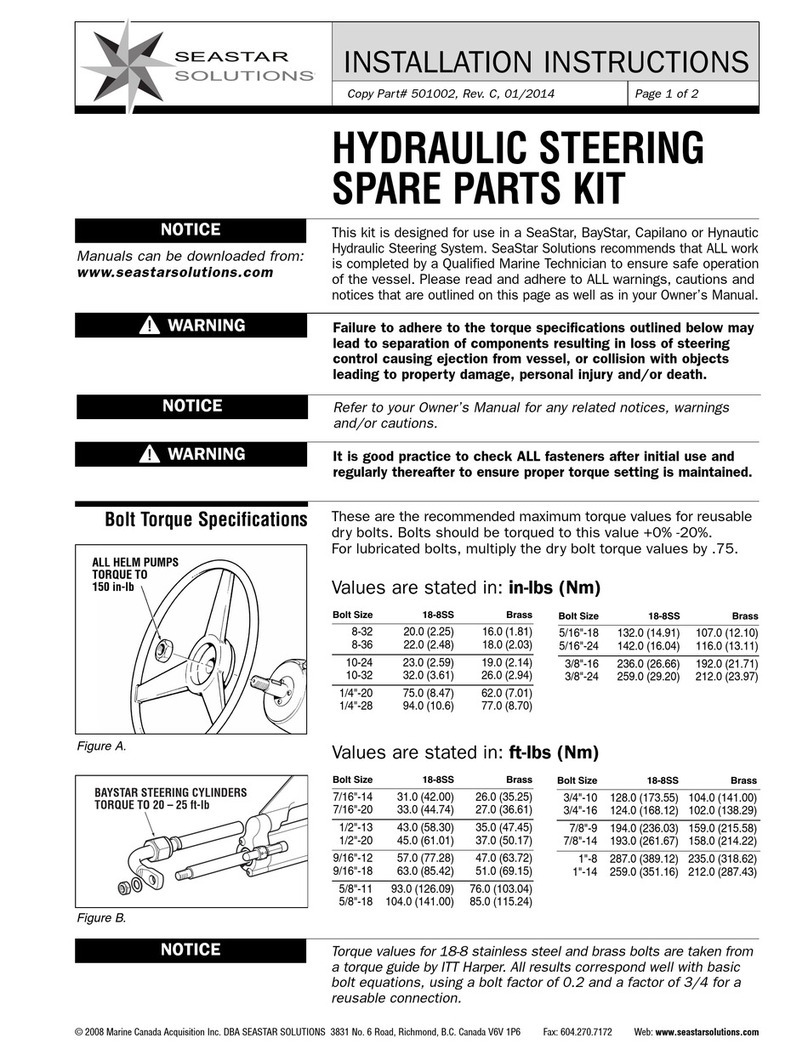
Seastar Solutions
Seastar Solutions HP6016 installation instructions
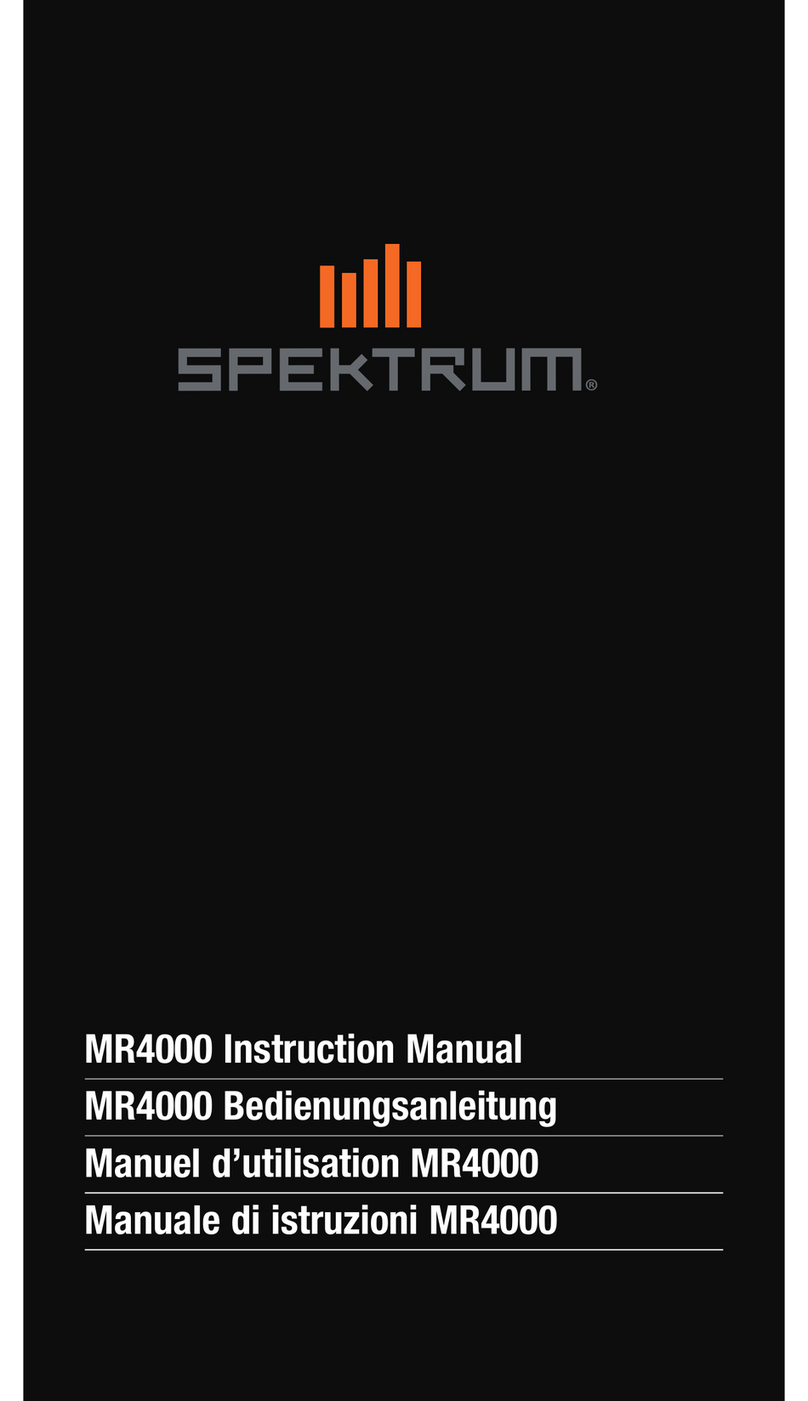
Horizon Hobby
Horizon Hobby Spektrum MR4000 instruction manual
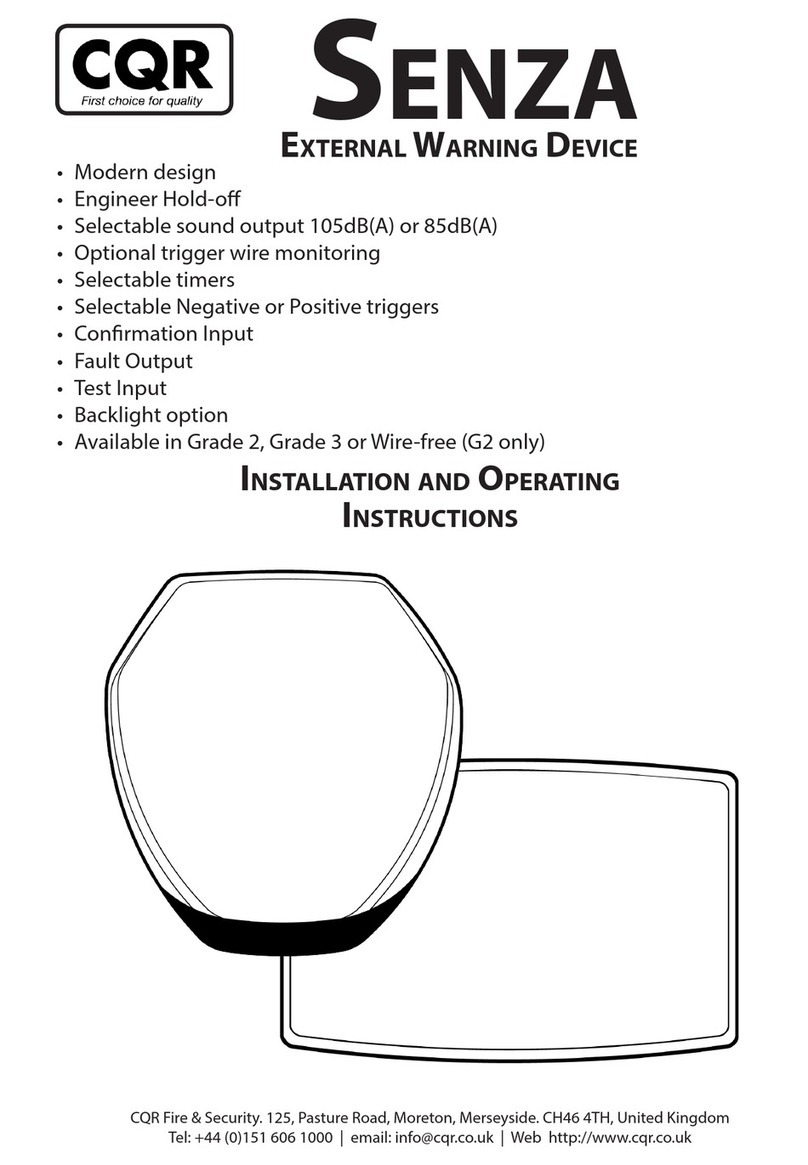
CQR
CQR Senza Installation and operating instructions
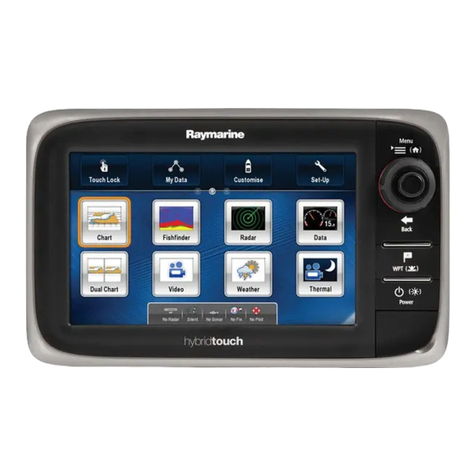
Raymarine
Raymarine E-Series installation instructions
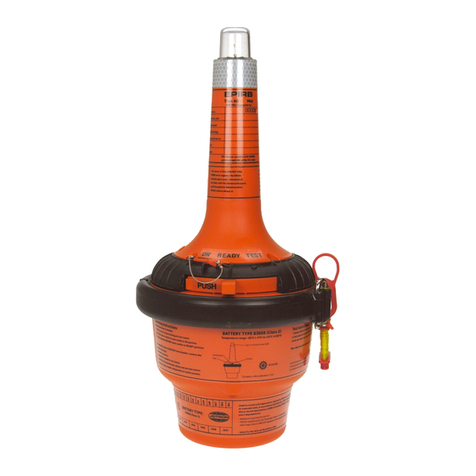
jotron
jotron Tron 40S MkII EPIRB user manual
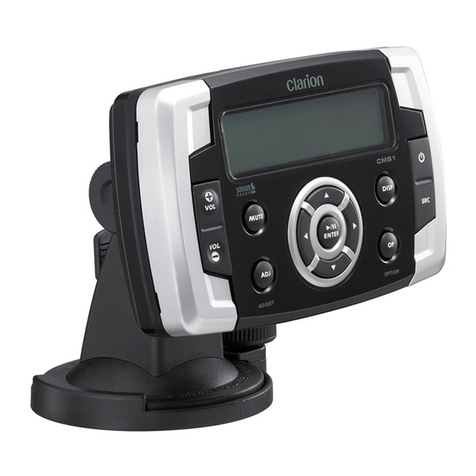
Clarion
Clarion CMS1 Owner's manual & installation manual
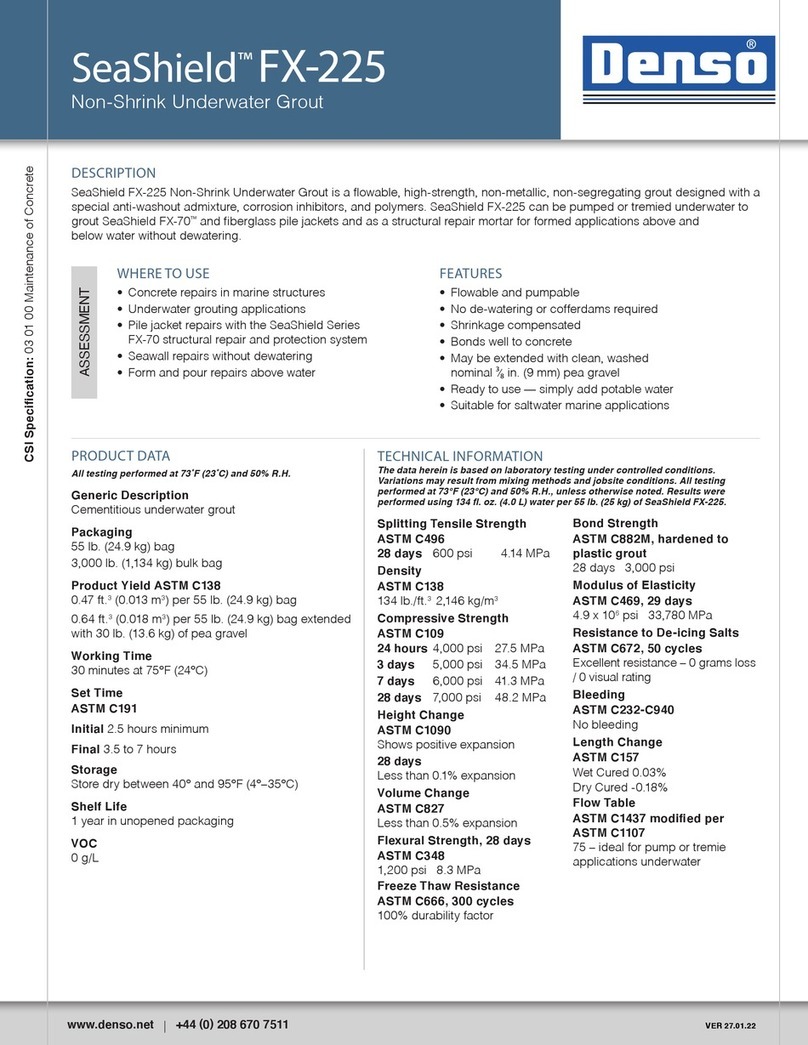
Denso
Denso SeaShield FX-225 quick start guide
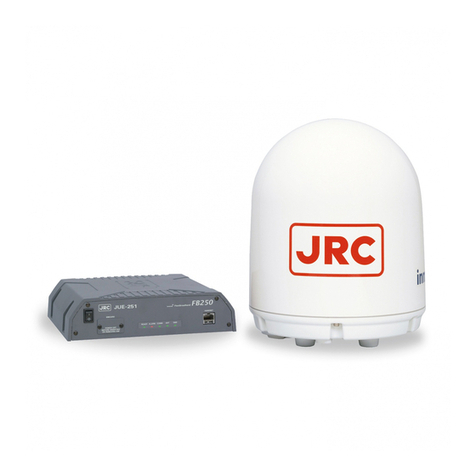
JRC
JRC Inmarsat FleetBroadband JUE-501 instruction manual
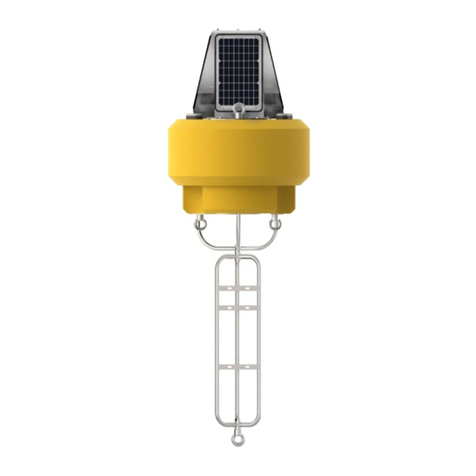
NexSens
NexSens CB-250 Data Buoy user guide
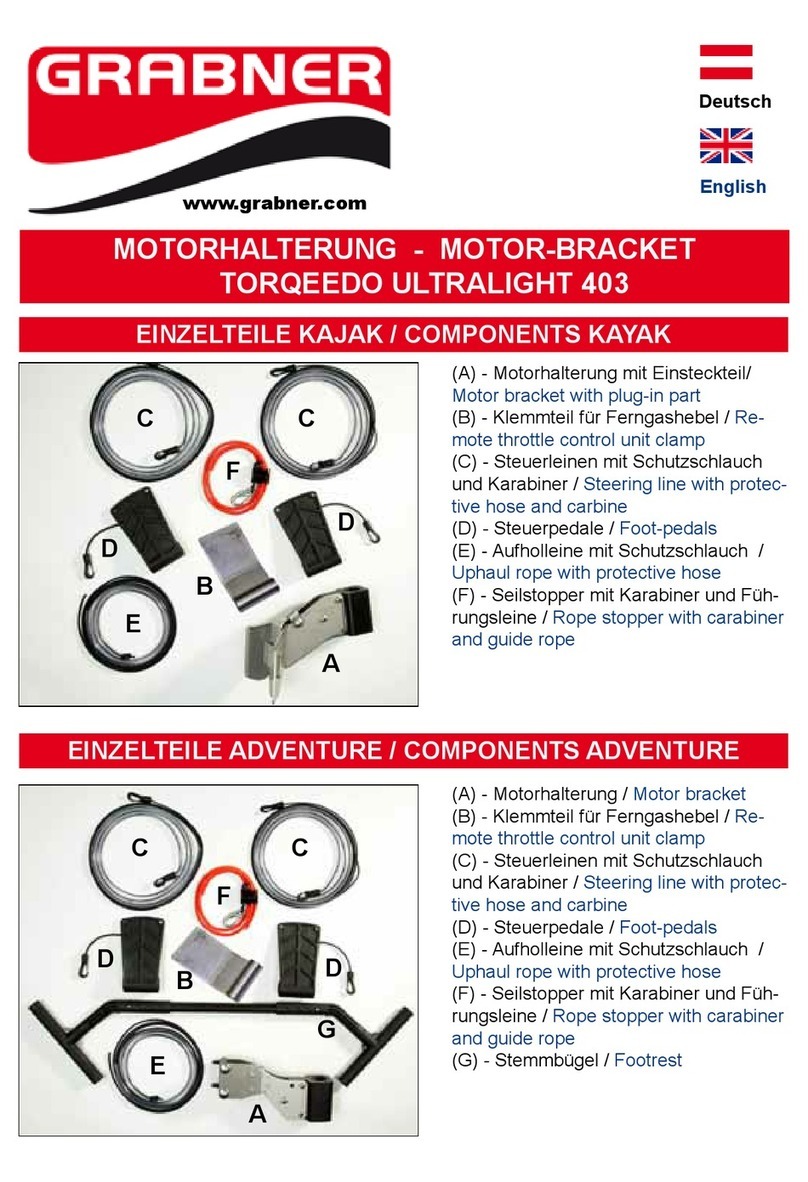
grabner
grabner Torqeedo Ultralight 403 manual
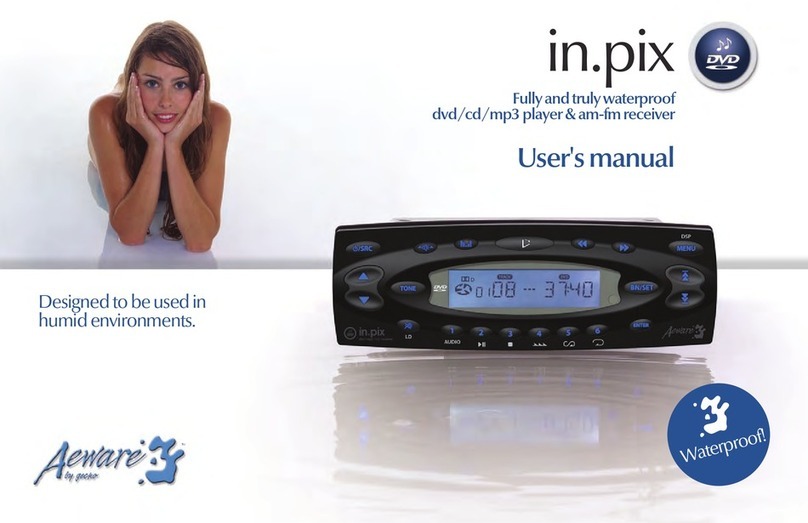
Aeware
Aeware Fully and truly waterproof dvd/cd/mp3 player & am-fm... user manual

GST
GST I-9404 quick start guide

